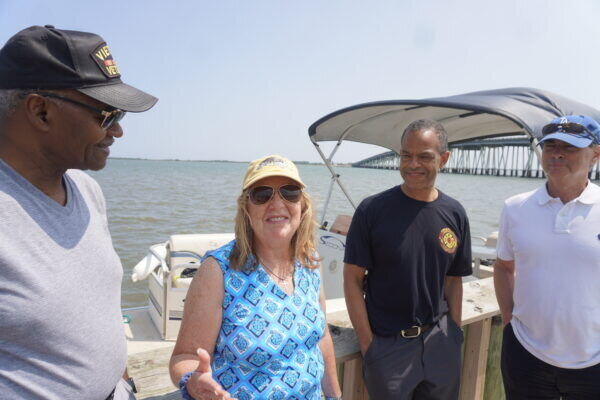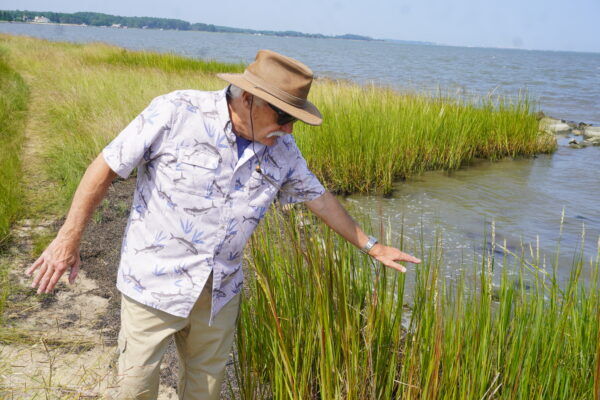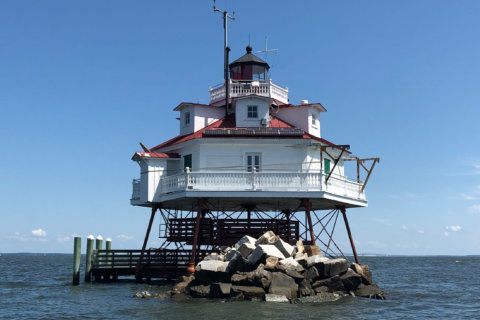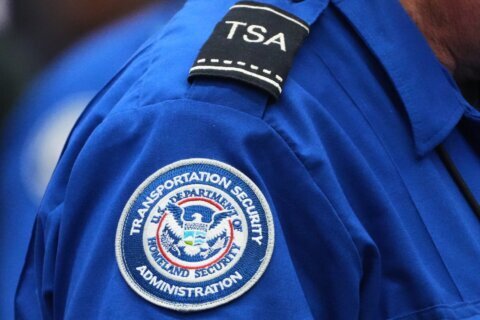This article was republished with permission from WTOP’s news partners at Maryland Matters. Sign up for Maryland Matters’ free email subscription today.

Sen. Mary Beth Carozza (R-Lower Shore) loves the Chesapeake Bay, but she continues to make sure her General Assembly colleagues and the public don’t forget about the state’s five coastal bays.
Carozza made that case last month when state officials unveiled new license plates that called for protecting the Chesapeake and as well as the coastal bays.
She did it again Thursday, during this week’s Maryland Association of Counties summer conference in Ocean City, when she took three of her Senate colleagues on a tour of one of those bays between Ocean City and the mainland.
“This is an opportunity to share the beauty of Maryland coastal bays that sometimes is dominated by the Chesapeake Bay,” she said on a boat ramp at the Sinepuxent Bay near Assateague Island in Worcester County.
Sen. President Pro Tem Malcolm Augustine (D-Prince George’s), Sen. Benjamin Brooks (D-Baltimore County) and Sen. Brian Feldman (D-Montgomery), who chairs the Education, Energy and the Environment Committee, felt the warm breeze from the bay and viewed visitors relaxing on the beach.
They also viewed restoration work that was completed about six years ago along the shoreline just north of the Verrazano Bridge that connects Assateague Island to the mainland. Some of that work included importing sand and rock and working to help maintain the habitat of the area’s horseshoe crabs, diamondback terrapins and sea trout.
Marsh grasses were planted along the mainland shoreline by members and volunteers with Maryland Coastal Bays Program, a nonprofit organization that promotes and seeks to protect the coast bays. In addition to Sinepuxent, the other four coastal bays are Assawoman, Newport, Isle of Wight and Chincoteague.
But Carozza and members of the bays program say the eroding shoreline and steep banks south of the bridge need repair. It’s not clear what legislation might be needed to make that happen, but Feldman said part of it would be to assess the state’s permitting and waiver processes.
“It’s something in that space,” he said. “I don’t know all the particulars. We’ll have to take a look, make some tweaks and some changes.”
Augustine brought his family along on the boat ride. His wife, Lauren, is a hydrologist and has done work on the Chesapeake Bay.
“It’s this living shoreline that’s been developed on this end in a very innovative way,” he said. “It’s always best to come and get your feet on the ground and sort of see what’s going on.”

Roman Jesien, science coordinator with Maryland Coastal Bays Program who operated the boat for the lawmakers’ tour, said the restoration work already completed north of the bridge cost $750,000 and stretches 1,000 feet.
The work on the southern shoreline would cost an estimated $1.5 million and stretch about 1,800 feet, Jesien said. In addition, he said part of the land is federal property.
Besides maintaining wildlife, the goal is to also bring the same number of visitors to relax on the sand and frolic in the water that’s done on the opposite shoreline.
“It’s important to not only restore that shoreline, but also make sure we keep the other one intact,” Jeisen said. “This is good for the environment and good for everyone.”







